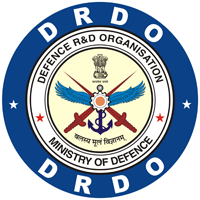Harnessing the Power of Seabuckthorn in Green Synthesis of Nanoparticles
Opportunities and Challenges
DOI:
https://doi.org/10.14429/dlsj.21470Keywords:
Nanoparticles, Green synthesis, Seabuckthorn, Bioactive compounds, Antioxidants, AntimicrobialsAbstract
Nanoparticles (NPs) have extended substantial popularity in everyday care products owing to their unique physicochemical features. However, traditional synthesis routes typically involve dangerous chemicals and high-energy processes that are a threat to the environment and safety. Green synthesis is a sustainable strategy for nanoparticle (NP) synthesis that takes advantage of plant-based reducing agents as substitutes for harsh chemicals. Seabuckthorn (Hippophae rhamnoides) extract is a prime candidate with an excellent list of bioactive compound profile that includes flavonoids, phenolics, and vitamins. Such natural components provide the possibility of using a cleaner, greener, and sustainable route for the formation of nanoparticles. This review paper explores the potential role of Seabuckthorn extract in the green synthesis protocols of NPs (NPs) based on its exceptional antioxidant, anti-inflammatory, and antimicrobial activities. A critical analysis of the synthesis procedure highlights the benefits of using Seabuckthorn extract over conventional approaches in terms of increased biocompatibility and eco compatibility. In addition, this review discusses the variety of nanoparticles that may be synthesised with Seabuckthorn extract. In addition, we critically evaluate the current research scenario, competition in scaling up the synthesis process, and the directions for enhancing the use of Seabuckthorn extract-mediated nanoparticles in diverse applications. The results highlight the significance of sustainable methods in nanotechnology, opening the door for eco-friendly innovations in personal care products.
Downloads
Published
How to Cite
Issue
Section
License
Copyright (c) 2025 Defence Scientific Information & Documentation Centre (DESIDOC)where otherwise noted, the Articles on this site are licensed under Creative Commons License: CC Attribution-Noncommercial-No Derivative Works 2.5 India

